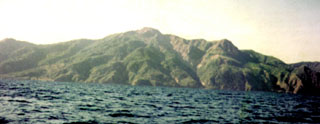Report on Paluweh (Indonesia) — January 1981
Scientific Event Alert Network Bulletin, vol. 6, no. 1 (January 1981)
Managing Editor: Lindsay McClelland.
Paluweh (Indonesia) Loud explosions; intermittent tephra ejection
Please cite this report as:
Global Volcanism Program, 1981. Report on Paluweh (Indonesia) (McClelland, L., ed.). Scientific Event Alert Network Bulletin, 6:1. Smithsonian Institution. https://doi.org/10.5479/si.GVP.SEAN198101-264150
Paluweh
Indonesia
8.32°S, 121.708°E; summit elev. 875 m
All times are local (unless otherwise noted)
Activity began to increase on 5 November and continued intermittently through the end of January. On 9 November, an eruption column rose 1 km from the summit crater. Bombs fell nearby and 2 mm of ash were deposited 1 km to the W. Bombs and ash were ejected for about 15 minutes starting at 1115 on 13 November, from a summit crater vent [but see 6:2] 40 m in diameter. The tephra column reached 700 m in height. On 27 January ejecta set bushes afire near a flank village. Detonations from explosions on 31 January were heard at Kota Baru, Flores Island . . . at 0740, 0803, 0807, 0913, 1030, and 1215. No additional activity had occurred as of 5 February.
Geological Summary. Paluweh volcano, also known as Rokatenda, forms the 8-km-wide island of Palu'e north of the volcanic arc that cuts across Flores Island. The broad irregular summit region contains overlapping craters up to 900 m wide and several lava domes. Several flank vents occur along a NW-trending fissure. The largest historical eruption occurred in 1928, when strong explosive activity was accompanied by landslide-induced tsunamis and lava dome emplacement. Pyroclastic flows in August 2013 resulted in fatalities.
Information Contacts: A. Sudradjat and L. Pardyanto, VSI.

